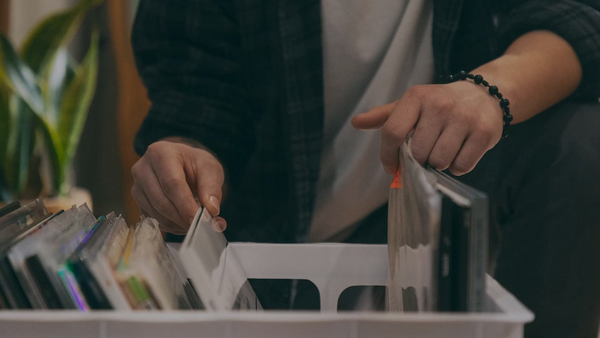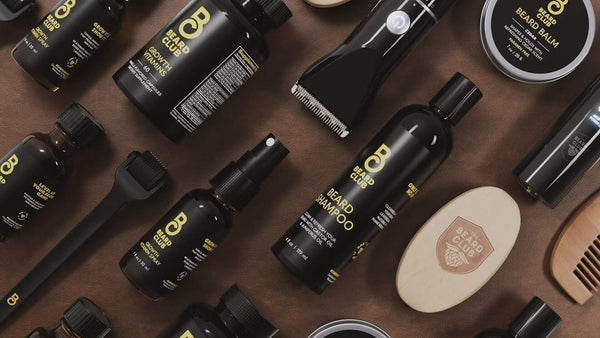How to Sell T-Shirts on Shopify: A Comprehensive Guide for Aspiring Entrepreneurs
Table of Contents
- Introduction
- Step 1: Define Your Audience and Niche
- Step 2: Create Your T-Shirt Designs
- Step 3: Choose a Customization Method
- Step 4: Select Quality T-Shirts
- Step 5: Design and Optimize Your Shopify Store
- Step 6: Implement a Marketing Strategy
- Step 7: Monitor and Optimize Your Store Performance
- Conclusion
- FAQ
Introduction
Did you know that the global custom t-shirt market is projected to reach an astonishing $10 billion by 2025? This statistic highlights the immense opportunity that exists for entrepreneurs looking to tap into this lucrative niche. As ecommerce continues to evolve, many are turning to platforms like Shopify to launch their online t-shirt businesses. Whether you're an experienced seller or a newcomer to the ecommerce landscape, understanding how to effectively sell t-shirts on Shopify can be the key to your success.
In this blog post, we will explore the essential steps to set up and grow your t-shirt business on Shopify. From identifying your target audience to designing your t-shirts and executing effective marketing strategies, we will cover all the vital aspects needed to thrive in this competitive marketplace. By the end of this article, you will have a comprehensive roadmap to launch your t-shirt brand successfully, leveraging the innovative tools and features offered by Shopify.
We invite you to reflect on your current digital strategies and consider how the insights we share can help you build a robust online presence. Our main message is clear: with the right approach and tools, you can transform your t-shirt business into a profitable venture. Let's dive in!
Step 1: Define Your Audience and Niche
Identifying Your Target Audience
The first step in selling t-shirts on Shopify is to clearly define your target audience. Who are the people you want to reach? Understanding your audience's demographics—such as age, gender, education, and lifestyle—will enable you to tailor your t-shirt designs to their preferences. Consider conducting surveys, analyzing social media trends, and engaging in conversations within relevant online communities to gather insights.
Choosing Your Niche
Once you have a clear understanding of your target audience, it's time to identify your niche. A niche is a specific segment of the market that has unique needs and preferences. By focusing on a niche, such as eco-friendly apparel, graphic tees for gamers, or custom designs for special events, you can differentiate your brand from the competition and build a loyal customer base.
Importance of Market Research
Conducting thorough market research is crucial. Analyze competitors in your chosen niche to identify gaps in the market. Look for trends and popular designs that resonate with your audience. This information will guide you in selecting unique designs that set your brand apart.
Step 2: Create Your T-Shirt Designs
Research Design Trends
Design is at the heart of your t-shirt business. To create attractive and marketable designs, start by researching current trends in the t-shirt industry. Look for inspiration on platforms like Pinterest, Instagram, and Etsy. Pay attention to color palettes, typography, and graphics that are gaining popularity.
Utilize Design Tools
You don't need to be a professional graphic designer to create stunning t-shirt designs. Platforms like Canva and Adobe Illustrator offer user-friendly tools that can help you bring your ideas to life. If you're not confident in your design skills, consider hiring a freelance designer through platforms like Fiverr or Upwork.
Test Your Designs
Before launching your t-shirt line, test your designs with potential customers. Share mockups on social media or conduct polls to gather feedback. Not only will this help refine your designs, but it will also engage your audience and build anticipation for your products.
Step 3: Choose a Customization Method
Direct-to-Garment (DTG) Printing
One of the most popular methods for customizing t-shirts is direct-to-garment (DTG) printing. This technique allows for high-quality, full-color prints and is ideal for designs with intricate details. However, it requires a significant upfront investment in equipment if you choose to handle the printing yourself.
Print-on-Demand Services
For those looking to minimize risk and upfront costs, print-on-demand services are an excellent option. Companies like Printful and Printify integrate seamlessly with Shopify, allowing you to create and sell t-shirts without holding inventory. When a customer places an order, the print-on-demand service handles production and shipping, freeing you to focus on marketing and growing your brand.
Other Customization Methods
Consider exploring additional customization methods, such as screen printing and embroidery. Each technique has its own advantages and can cater to different styles and customer preferences.
Step 4: Select Quality T-Shirts
Fabric Selection
The quality of your t-shirts plays a significant role in customer satisfaction. Common fabric options include cotton, polyester, and blends. Cotton is soft and breathable, making it a popular choice, while polyester is durable and resistant to shrinking. Consider your target audience's preferences when selecting fabric types.
Weight and Fit
T-shirts come in various weights and fits. Lightweight shirts are ideal for warm weather, while heavyweight shirts offer more durability. Ensure you provide options that cater to different body types and preferences, such as slim fit, regular fit, and relaxed fit.
Step 5: Design and Optimize Your Shopify Store
Setting Up Your Store
Creating your Shopify store is straightforward. Begin by signing up for a Shopify account and selecting a plan that fits your budget. Choose a memorable store name and register a domain. From there, you can select a theme that reflects your brand's aesthetic.
Customizing Your Store
Shopify offers a range of customizable themes that allow you to design your store according to your vision. Utilize your brand colors, fonts, and imagery to create a cohesive look. Ensure your website is user-friendly, with easy navigation and clear calls-to-action.
Adding Your Products
As you add your t-shirts to your store, pay attention to product titles, descriptions, and images. Use high-quality photos that showcase your designs from multiple angles. Write compelling descriptions that highlight the unique features of your t-shirts, including fabric, fit, and care instructions.
Step 6: Implement a Marketing Strategy
Building a Marketing Plan
Once your store is set up, it's time to develop a marketing strategy. Start by identifying where your target audience spends their time online. This could include social media platforms, forums, or niche websites. Tailor your marketing efforts to reach these channels effectively.
Leveraging Social Media
Social media is a powerful tool for promoting your t-shirt business. Create accounts on platforms like Instagram, Facebook, and TikTok to showcase your designs and engage with your audience. Consider collaborating with influencers to expand your reach and credibility.
Utilizing Email Marketing
Email marketing is another effective way to connect with your customers. Build an email list by offering incentives, such as discounts on first purchases. Use regular newsletters to keep subscribers informed about new designs, promotions, and brand updates.
Paid Advertising
Consider investing in paid advertising on platforms like Facebook and Google to drive traffic to your store. Target specific demographics and interests to maximize your ad spend and reach potential customers effectively.
Step 7: Monitor and Optimize Your Store Performance
Analyzing Metrics
Once your store is live, regularly analyze performance metrics to assess your success. Shopify provides built-in analytics that allows you to track sales, traffic sources, and customer behavior. Use this data to make informed decisions about your marketing strategies and product offerings.
A/B Testing
Implement A/B testing to optimize your store further. Experiment with different product descriptions, images, and pricing strategies to determine what resonates best with your audience. This iterative approach will help you refine your store's performance over time.
Collecting Customer Feedback
Encourage customers to leave reviews and feedback on their purchases. This not only builds social proof but also provides valuable insights for improving your products and services.
Conclusion
Selling t-shirts on Shopify is an exciting opportunity for aspiring entrepreneurs. By following the steps outlined in this guide, you can create a successful online t-shirt business that resonates with your target audience. Remember that success comes from continuous learning and adapting to market trends.
As you embark on this journey, we encourage you to explore the PowerCommerce eStore Suite, our comprehensive offering designed to empower ecommerce brands like yours. With features such as storefront optimization, conversion rate optimization, and seamless Shopify migrations, we provide the tools you need to elevate your online business.
FAQ
1. How much does it cost to start a t-shirt business on Shopify?
Starting a t-shirt business on Shopify can be affordable. Shopify offers various pricing plans, and you can choose to use print-on-demand services to minimize upfront costs.
2. How do I market my t-shirt business effectively?
Utilize a combination of social media marketing, email campaigns, and paid advertising. Engaging with your audience and leveraging influencer partnerships can also enhance your visibility.
3. What are the best print-on-demand services for t-shirts?
Popular print-on-demand services include Printful, Printify, and Teespring. Each offers unique features and pricing, so choose one that aligns with your business needs.
4. How can I ensure the quality of my t-shirts?
Select reputable suppliers and order samples before listing products in your store. High-quality materials and printing techniques will lead to better customer satisfaction.
5. Can I sell my t-shirt designs on other platforms?
Yes! You can expand your reach by selling your t-shirt designs on multiple platforms, including Etsy, Amazon, and social media marketplaces.
6. How important is SEO for my Shopify store?
SEO is crucial for driving organic traffic to your store. Optimize your product titles, descriptions, and images with relevant keywords to enhance your visibility in search results.
By following these guidelines and utilizing the resources available through PowerCommerce, you're well on your way to building a successful t-shirt business on Shopify. Let's get started and turn your vision into reality!
POWER your ecommerce with our weekly insights and updates!
Stay aligned on what's happening in the commerce world
Email Address
Handpicked for You
21 March 2025 / Blog
How to Use Shopify Themes: A Comprehensive Guide for E-commerce Success
Read more21 March 2025 / Blog
How to Find SKU on DSers: A Comprehensive Guide for E-commerce Professionals
Read more21 March 2025 / Blog


